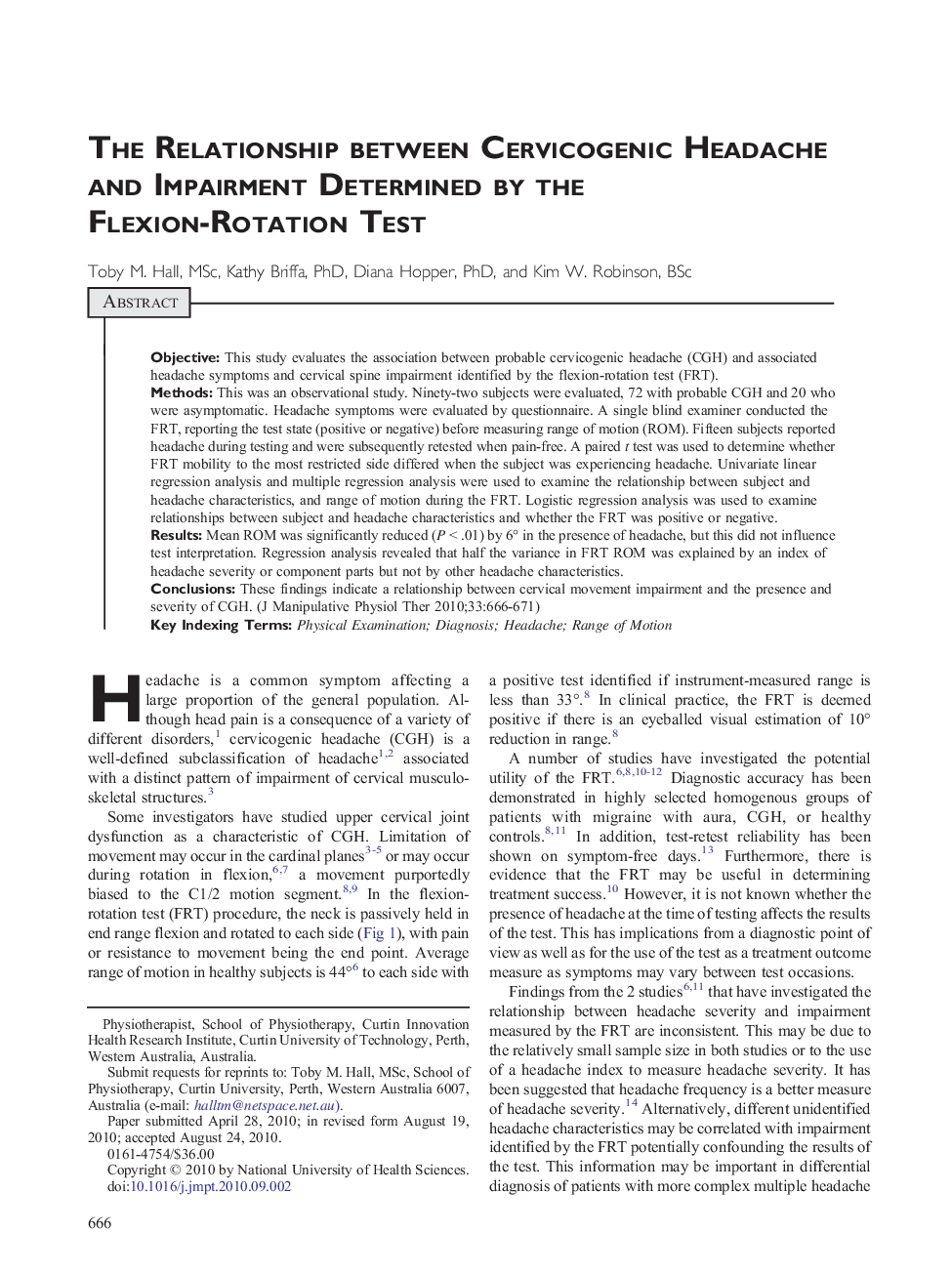| Article ID | Journal | Published Year | Pages | File Type |
|---|---|---|---|---|
| 2620800 | Journal of Manipulative and Physiological Therapeutics | 2010 | 6 Pages |
ObjectiveThis study evaluates the association between probable cervicogenic headache (CGH) and associated headache symptoms and cervical spine impairment identified by the flexion-rotation test (FRT).MethodsThis was an observational study. Ninety-two subjects were evaluated, 72 with probable CGH and 20 who were asymptomatic. Headache symptoms were evaluated by questionnaire. A single blind examiner conducted the FRT, reporting the test state (positive or negative) before measuring range of motion (ROM). Fifteen subjects reported headache during testing and were subsequently retested when pain-free. A paired t test was used to determine whether FRT mobility to the most restricted side differed when the subject was experiencing headache. Univariate linear regression analysis and multiple regression analysis were used to examine the relationship between subject and headache characteristics, and range of motion during the FRT. Logistic regression analysis was used to examine relationships between subject and headache characteristics and whether the FRT was positive or negative.ResultsMean ROM was significantly reduced (P < .01) by 6° in the presence of headache, but this did not influence test interpretation. Regression analysis revealed that half the variance in FRT ROM was explained by an index of headache severity or component parts but not by other headache characteristics.ConclusionsThese findings indicate a relationship between cervical movement impairment and the presence and severity of CGH.
